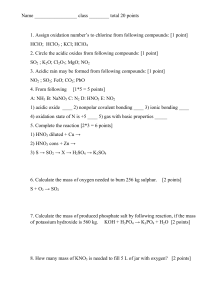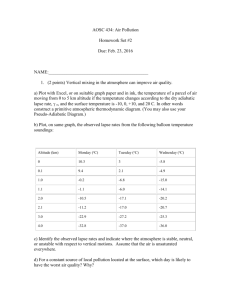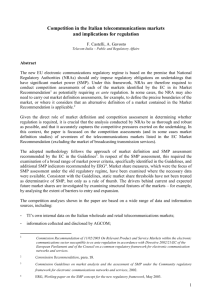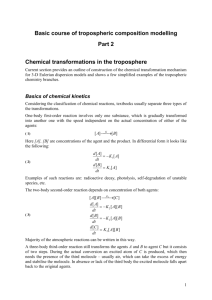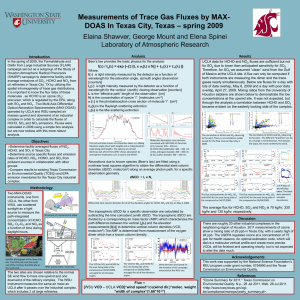The effect of SO2 and platinum oxides on NO oxidation over Pt
advertisement
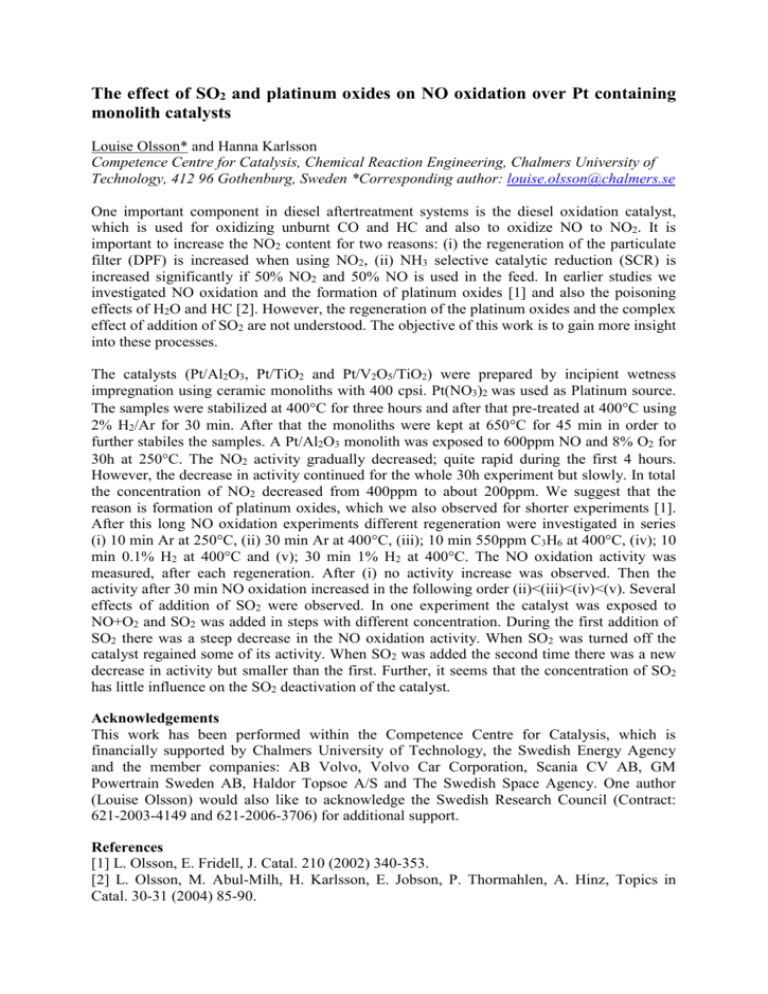
The effect of SO2 and platinum oxides on NO oxidation over Pt containing monolith catalysts Louise Olsson* and Hanna Karlsson Competence Centre for Catalysis, Chemical Reaction Engineering, Chalmers University of Technology, 412 96 Gothenburg, Sweden *Corresponding author: louise.olsson@chalmers.se One important component in diesel aftertreatment systems is the diesel oxidation catalyst, which is used for oxidizing unburnt CO and HC and also to oxidize NO to NO2. It is important to increase the NO2 content for two reasons: (i) the regeneration of the particulate filter (DPF) is increased when using NO2, (ii) NH3 selective catalytic reduction (SCR) is increased significantly if 50% NO2 and 50% NO is used in the feed. In earlier studies we investigated NO oxidation and the formation of platinum oxides [1] and also the poisoning effects of H2O and HC [2]. However, the regeneration of the platinum oxides and the complex effect of addition of SO2 are not understood. The objective of this work is to gain more insight into these processes. The catalysts (Pt/Al2O3, Pt/TiO2 and Pt/V2O5/TiO2) were prepared by incipient wetness impregnation using ceramic monoliths with 400 cpsi. Pt(NO3)2 was used as Platinum source. The samples were stabilized at 400C for three hours and after that pre-treated at 400C using 2% H2/Ar for 30 min. After that the monoliths were kept at 650C for 45 min in order to further stabiles the samples. A Pt/Al2O3 monolith was exposed to 600ppm NO and 8% O2 for 30h at 250C. The NO2 activity gradually decreased; quite rapid during the first 4 hours. However, the decrease in activity continued for the whole 30h experiment but slowly. In total the concentration of NO2 decreased from 400ppm to about 200ppm. We suggest that the reason is formation of platinum oxides, which we also observed for shorter experiments [1]. After this long NO oxidation experiments different regeneration were investigated in series (i) 10 min Ar at 250°C, (ii) 30 min Ar at 400°C, (iii); 10 min 550ppm C3H6 at 400°C, (iv); 10 min 0.1% H2 at 400°C and (v); 30 min 1% H2 at 400°C. The NO oxidation activity was measured, after each regeneration. After (i) no activity increase was observed. Then the activity after 30 min NO oxidation increased in the following order (ii)<(iii)<(iv)<(v). Several effects of addition of SO2 were observed. In one experiment the catalyst was exposed to NO+O2 and SO2 was added in steps with different concentration. During the first addition of SO2 there was a steep decrease in the NO oxidation activity. When SO2 was turned off the catalyst regained some of its activity. When SO2 was added the second time there was a new decrease in activity but smaller than the first. Further, it seems that the concentration of SO2 has little influence on the SO2 deactivation of the catalyst. Acknowledgements This work has been performed within the Competence Centre for Catalysis, which is financially supported by Chalmers University of Technology, the Swedish Energy Agency and the member companies: AB Volvo, Volvo Car Corporation, Scania CV AB, GM Powertrain Sweden AB, Haldor Topsoe A/S and The Swedish Space Agency. One author (Louise Olsson) would also like to acknowledge the Swedish Research Council (Contract: 621-2003-4149 and 621-2006-3706) for additional support. References [1] L. Olsson, E. Fridell, J. Catal. 210 (2002) 340-353. [2] L. Olsson, M. Abul-Milh, H. Karlsson, E. Jobson, P. Thormahlen, A. Hinz, Topics in Catal. 30-31 (2004) 85-90.
